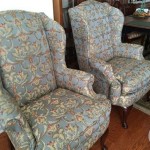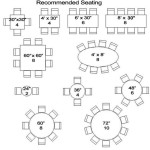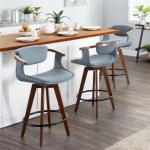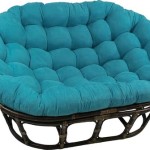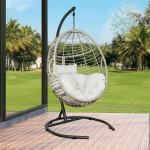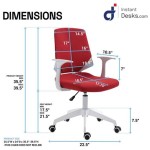Best Patio Chairs for Bad Backs: A Comprehensive Guide
Patio furniture offers an opportunity to enjoy the outdoors in comfort. However, for individuals with back pain, selecting the right patio chair becomes a critical decision. An unsuitable chair can exacerbate existing discomfort and even contribute to new back problems. Choosing supportive and ergonomically designed seating is essential for promoting relaxation and minimizing strain on the spine.
This article provides a detailed overview of factors to consider when selecting patio chairs specifically designed to alleviate or prevent back pain. Understanding these elements will empower individuals to make informed choices, creating an outdoor space that is both aesthetically pleasing and conducive to spinal health.
Understanding the Importance of Lumbar Support
Lumbar support refers to the chair's ability to maintain the natural curvature of the lower back. This area of the spine, also known as the lumbar region, is particularly susceptible to strain and injury. Chairs lacking adequate lumbar support can force the spine into an unnaturally flat or rounded position, leading to muscle fatigue, pain, and potentially long-term damage.
A chair with built-in lumbar support features a contoured backrest that gently conforms to the lower back's inward curve. This support helps to maintain proper spinal alignment, distribute weight evenly, and reduce pressure on the intervertebral discs. The ideal lumbar support should be adjustable, allowing individuals to customize the fit to their specific body type and preferences. Some chairs offer adjustable lumbar support cushions or mechanisms that can be raised or lowered to target the precise area of the lower back requiring additional support.
When assessing a patio chair's lumbar support, consider the following: the height of the support relative to your lower back, the depth of the curve, and the firmness of the support. A good test is to sit in the chair and observe whether the support fills the gap between the lower back and the chair's backrest, promoting a natural and comfortable posture. Chairs with overly aggressive or poorly placed lumbar support can be just as detrimental as those lacking it entirely. Aim for a gentle, consistent support that encourages good posture without feeling intrusive.
Material Considerations: Balancing Comfort and Durability
The materials used in the construction of patio chairs significantly impact both comfort and durability. For individuals with back pain, the choice of material should prioritize comfort and support without compromising the chair's ability to withstand outdoor elements. Several options offer a good balance of both.
Wicker, specifically resin wicker, is a popular choice for patio furniture due to its aesthetic appeal and weather resistance. However, wicker chairs may lack adequate lumbar support unless paired with cushions. When selecting wicker chairs, ensure that the cushions are thick and supportive, and that they are made from materials that are resistant to moisture and fading. Consider adding a separate lumbar pillow for enhanced support.
Metal frames, such as aluminum or steel, provide a sturdy and durable base for patio chairs. These chairs are often paired with mesh or sling fabric for the seat and back. Mesh chairs offer good breathability, making them suitable for hot climates. High-quality mesh fabrics can provide a degree of support, but they may lack the cushioning needed for individuals with sensitive backs. Look for mesh chairs with a taut, supportive weave that doesn't sag excessively under weight. Steel frames are heavier than aluminum, offering enhanced stability, but they may be more prone to rust if not properly treated.
Wood is another classic choice for patio furniture, offering a natural and aesthetically pleasing look. Hardwoods like teak and eucalyptus are particularly well-suited for outdoor use due to their inherent resistance to moisture and decay. Wooden chairs can provide good support, but they may require cushions for added comfort. When selecting wooden chairs, look for designs with contoured seats and backs that promote good posture. Ensure that the wood is properly sealed and treated to prevent damage from the elements.
Regardless of the material chosen, cushions play a crucial role in providing comfort and support. Opt for cushions made from high-density foam that will retain its shape and provide adequate cushioning over time. The fabric should be durable, weather-resistant, and easy to clean. Consider fabrics that are specifically designed for outdoor use, such as Sunbrella or Olefin, which are resistant to fading, mold, and mildew.
Ergonomic Design Features: Promoting Optimal Posture
Beyond lumbar support, several other ergonomic design features contribute to a patio chair's ability to alleviate or prevent back pain. These features focus on promoting a natural and comfortable posture, minimizing strain on the spine, and accommodating individual body types.
Seat height is a critical factor to consider. The ideal seat height allows the feet to rest flat on the ground with the knees bent at a 90-degree angle. This posture evenly distributes weight and reduces pressure on the lower back. Chairs that are too low can force the knees up towards the chest, straining the back muscles. Chairs that are too high can cause the feet to dangle, putting pressure on the thighs and impeding circulation. Adjustable seat heights are ideal, allowing individuals to customize the chair to their specific needs. If adjustable seat height is not available, consider using cushions or footrests to achieve the optimal posture.
The angle of the backrest is another important consideration. A slightly reclined backrest can help to reduce pressure on the spine and promote relaxation. However, excessive recline can lead to slouching, which can exacerbate back pain. Look for chairs with a backrest angle that supports the natural curvature of the spine without forcing the body into an unnatural position. Some chairs offer adjustable backrest angles, allowing individuals to fine-tune the position to their comfort level. Consider models with a built-in headrest or neck support to further reduce strain on the upper back and neck.
Armrests can also play a role in promoting good posture. Armrests that are too high can cause the shoulders to hunch, leading to neck and upper back pain. Armrests that are too low can force the arms to dangle, putting strain on the shoulders and upper back. The ideal armrest height allows the arms to rest comfortably at the sides with the shoulders relaxed. Armrests should also be wide enough to provide adequate support without feeling restrictive. Consider chairs with adjustable armrests, allowing individuals to customize the height and width to their specific needs.
Swivel and rocking features can also enhance comfort and mobility. Swivel chairs allow for easy movement without having to strain the back, making them ideal for individuals with limited mobility. Rocking chairs can provide a gentle and soothing motion that can help to relieve tension and promote relaxation. However, it is important to ensure that the rocking motion is smooth and controlled, and that the chair provides adequate support in all positions.
Finally, consider the overall size and weight capacity of the chair. Choose a chair that is appropriately sized for your body type and weight. A chair that is too small or too weak can be uncomfortable and even dangerous. Check the manufacturer's specifications for weight capacity and ensure that it meets your needs.
Chair Types and Their Suitability
Various types of patio chairs cater to different needs and preferences. Understanding the characteristics of each type can assist in selecting the most suitable option for individuals with back pain.
Adirondack chairs are known for their distinctive design, featuring a high, sloped back and a contoured seat. While they offer a relaxed and casual look, traditional Adirondack chairs may lack adequate lumbar support. Consider Adirondack chairs with built-in lumbar support or add a supportive cushion to improve comfort. The low seat height can also be a challenge for some individuals; opting for a model with a slightly higher seat can alleviate this issue.
Rocking chairs offer a gentle and soothing motion that can help to relieve tension. Look for rocking chairs with a supportive backrest and comfortable seat. The rocking motion should be smooth and controlled, and the chair should provide adequate support in all positions. Avoid rocking chairs with overly deep seats or excessively reclined backrests, as these can promote slouching.
Lounge chairs are designed for relaxation and typically feature a reclined backrest and a comfortable seat. While they can be comfortable, some lounge chairs may lack adequate lumbar support. Look for lounge chairs with adjustable backrests and built-in lumbar support. Consider adding a supportive cushion to enhance comfort.
Dining chairs are designed for use at a table and typically feature a more upright posture. Look for dining chairs with a supportive backrest and a comfortable seat. The seat height should be appropriate for the table height, allowing the feet to rest flat on the ground with the knees bent at a 90-degree angle.
Zero-gravity chairs are designed to distribute weight evenly, reducing pressure on the spine. These chairs recline to a position where the feet are elevated above the heart, promoting relaxation and improving circulation. While zero-gravity chairs can be beneficial for individuals with back pain, it is important to choose a model with adequate lumbar support and a comfortable seat. Some individuals may find the reclined position uncomfortable or difficult to get in and out of.
Swivel chairs offer easy movement and flexibility. Look for swivel chairs with a supportive backrest and a comfortable seat. The swivel mechanism should be smooth and reliable. Swivel chairs can be particularly beneficial for individuals with limited mobility or those who need to frequently change position.
Testing and Evaluating Patio Chairs
The most effective way to determine if a patio chair is suitable for your needs is to test it in person. If possible, visit a furniture store and spend some time sitting in different chairs. Pay attention to the following factors:
Comfort: Does the chair feel comfortable and supportive? Does it provide adequate lumbar support? Is the seat height appropriate? Are the armrests comfortable?
Posture: Does the chair promote good posture? Does it encourage you to sit upright with your shoulders relaxed? Does it prevent slouching?
Ease of Use: Is the chair easy to get in and out of? Is it easy to adjust the backrest, seat height, or armrests? Is it easy to clean and maintain?
Durability: Is the chair made from durable materials? Is it weather-resistant? Will it withstand regular use?
Stability: Is the chair stable and sturdy? Does it wobble or tip over easily?
Ask a salesperson for assistance and clarification on any features or adjustments you are unsure about. Bring a friend or family member with you to provide a second opinion.
If purchasing online, carefully review the product specifications and customer reviews. Look for reviews that specifically mention back support and comfort. Pay attention to the dimensions of the chair and compare them to your body size. Check the return policy in case the chair does not meet your expectations.
Consider consulting with a chiropractor or physical therapist for personalized recommendations. These professionals can assess your specific needs and provide guidance on selecting a patio chair that is appropriate for your condition.

Best Camping Chairs For Bad Backs In 2024 Outdoor Life

Best Camping Chairs For Bad Backs In 2024 Outdoor Life

Best Camping Chairs For Bad Backs In 2024 Outdoor Life

Best Camping Chairs For Bad Backs In 2024 Outdoor Life

Best Patio Chair For Bad Outlet Back

Best Patio Chair 2025 For Bad Back

Best Camping Chairs For Bad Backs In 2024 Outdoor Life

Best Patio Chair 2025 For Bad Back
:max_bytes(150000):strip_icc()/hampton-bay-rocking-chairs-81849-64_1000-8b6ee7d8a026430e9d2f7e7b16891a10.jpg?strip=all)
Best Patio Chair For Bad Outlet Back

The 6 Best Camping Chairs Of 2024 Reviews By Wirecutter

